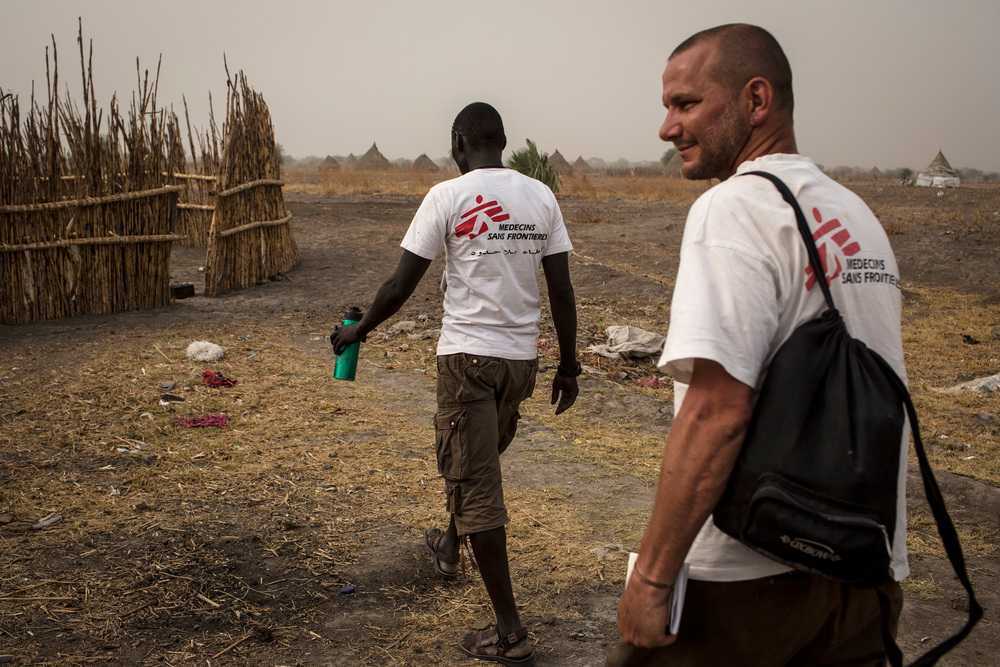{{ subitems[item.mlid].body }}
{{ subitems[item.mlid].linktitle }}Setting up a Project
We work in more than 70 countries around the world, each with its own unique circumstances, but MSF missions generally follow a common pattern to make sure our resources and expertise are used in the best way possible.
When a crisis breaks we act fast to gauge the needs, mobilizing MSF staff already in the area or sending in an emergency team. We begin treating people even as we develop the full plan.
In Haiti, for example, our staff treated the first victim of 2010’s earthquake within five minutes, even before the emergency team deployed. This is because we have emergency supplies — from surgical kits and inflatable hospital and cholera kits — ready at all times, as well as cash reserves for disaster response.
This means we do not need to wait for institutional donors to release money or a crisis to catch the public consciousness: we can act where and when the need is greatest.
Triggers
We are alerted to crises in many different ways and triggers for the assessment mission can come from various sources:
- MSF teams already working with the people affected
- Local governments
- The international community
- Humanitarian organizations such as the United Nations Department of Humanitarian Affairs (UNDHA)
- Funding bodies such as ECHO, the humanitarian aid department of the European Commission
- Local and national NGOs
- Media reports or information from social media
Once the information has been checked and validated, we send a team of medical and logistics experts to the crisis area to carry out a quick evaluation. This team might include staff already working in the area, or specialists deployed from our headquarters.
The emergency team
The emergency team is a group of people with a lot of field experience in key areas, such as medical care, logistics and management. They are on stand-by 24/7 and can be deployed within hours. They are often responsible for the initial assessment and can stay for months to provide the lifesaving care while a longer-term project is put in place.
Proposal
The team assesses the situation, the number of people affected and the needs, and sends a proposal back to the MSF headquarters office.
When the proposal is approved, staff at MSF headquarters start the process of selecting personnel, organizing materials and resources and securing project funds.
Initiating a project
Once the project plan has been drawn up and confirmed, technical equipment and resources are sent to the area.
In large crises, planes fly in all the necessary materials so that the work can begin immediately. Thanks to set protocols, specialized kits and our logistics centres, MSF can distribute material and equipment within hours, ready for the response team to start work as soon as they arrive.
Some countries, which may be prone to crises, have emergency supplies on standby in local warehouses.
Wherever possible, MSF ships the majority of material and drugs by sea to reduce costs.
The team in the field
An average field project team has between four and 12 international volunteers working in collaboration with up to 200 local staff.
Field operations are managed by a country manager and a coordination team. This often includes a medical coordinator, a logistical coordinator and a financial coordinator, typically in the capital city of each country where MSF works.
These people oversee the project and act as liaison between MSF, local authorities, partners, and other non-governmental organizations (NGOs). They report regularly to the operations departments at their headquarters.
Funding a project
Internationally, the vast majority of MSF’s money - almost 90 per cent - comes from individual donors. This frees us from the conditions that may be attached to money from governments or large institutions. It also allows us to act quickly.
Money is collected through MSF offices all over the world. All of the money is pooled and used to fund MSF actions across the globe, from fundraising to front line services. Over 80 per cent goes to our field projects.We keep around 25 per cent of our funds as cash, ready to spend on emergencies.
This means we do not need to launch a fundraising appeal before we launch a humanitarian response.We act first, based on need, and build our fundraising around the realities on the ground.International staff receive small sums for their work with MSF, while the national staff are paid competitive wages. We keep costs down by using generic medications, buying in bulk and carefully managing our supply lines.Find out more about how we spend your money
Running a project
MSF projects generally have a life span somewhere between 18 months and three and a half years, but we have been in some areas for decades in one form or another.
There are clear differences between an emergency response and a long-term healthcare project, but they all follow roughly the same process, as described here.
-
{{{one.node.title}}}
{{{one.node.body}}}
